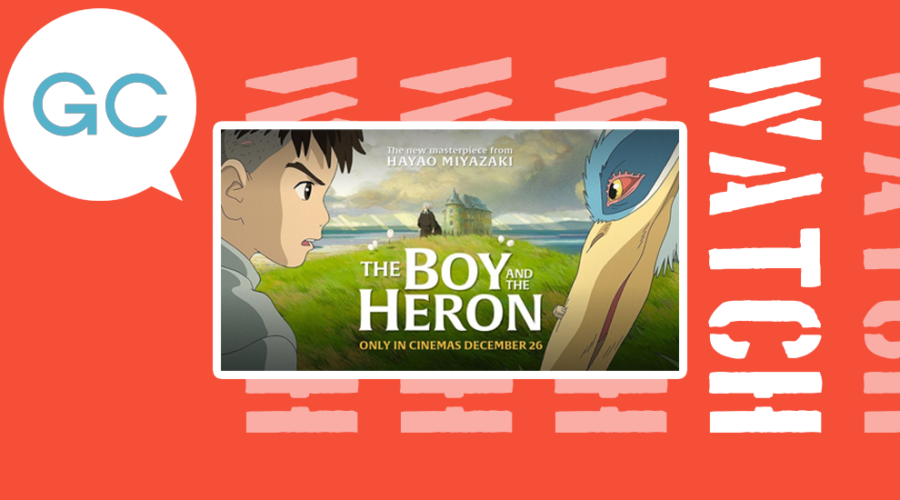The Boy and the Heron is the story of a boy named Mahito who can’t accept his mother’s death. One day, a mysterious heron tells him that his mother is alive and that if he wants to see her, he must go to a magic tower. And so the magical adventure of Mahito for discovering the truth begins.
The latest masterpiece by Hayao Miyazaki, the Japanese artist who created Spirited Away, Ponyo, and Howl’s Moving Castle, takes us into a world where everything seems simple, but the further we go, the more complicated the adventures become. Probably the first question we ask ourselves after watching the movie is what all these adventures are about; will we be able to find the connections between the different characters?
For roughly the first third of the movie, the protagonist doesn’t have a specific goal, and even when he enters the tower after the mysterious heron, we can’t consider that his goal is to find his stepmother or his mother. Mahito’s entry into the tower, like Alice in Wonderland, takes us to a magical world where anything is possible, and the lord of the tower, the god of this hidden world, tries to achieve peace in the world.
Miyazaki is one of the few artists alive who has his own style in animation, and his amazing ability to enter and advance the story is unique. Three hallmarks of his style are evident in The Boy and the Heron: eye-catching scenes, quirky characters, and unpredictable adventures.
Every frame of Miyazaki’s movies is so delicate and beautiful and has an elegance that is rarely seen in the world of animation these days.
This accuracy and attention can be seen particularly in the design of the characters and remains unique to Miyazaki’s style. In recent years, popular and successful characters such as Mickey Mouse or SpongeBob have been made in CGI, but this process can’t be applied to the characters of The Boy and the Heron. For example, the heron with its strange look would not be be as interesting or as funny if it had been made with 3D technologies. Likewise, Mahito and his family, servants and parakeets.
The power of images in this work plays a big role in conveying emotions. Even when we see a grim and frightening scene like a city fire, the movement of shapes and figures is such that the audience, especially people who watch these images on a large screen, immediately imagines themselves in that situation. Another example that shows the director’s mastery in using the right point of view is a scene where the boy enters the magical world and descends from the sky on a beach. Or when Mahito finds his stepmother and she angrily pushes him away and refuses to be with him. These images are incredibly powerful.
He is stubborn, brave, and strong from the beginning. So what’s going to change, and what does the protagonist achieve at the end?
But what is the story about? And what does Miyazaki want to explain?
We are definitely dealing with an ambiguous story, and the characters who come and go during the story evoke opposite reactions in our mind. The Japanese translation of the title is How Do You Live? and is taken from a book by Genzaburo Yoshino, although we can’t say that it’s completely adapted from it. Some parts, such as the death of the mother, were potentially inspired by Miyazaki’s life and the death of his own mother in 1983.
Unlike Chihiro in Spirited Away, Mahito doesn’t seek to save his parents, and unlike Kiki in Kiki’s Delivery Service, he doesn’t deal with teenage challenges. He’s a young boy who’s confronted with deeper concepts like birth and death and he wants to understand where people are before birth or after death.
He is stubborn, brave, and strong from the beginning. So what’s going to change, and what does the protagonist achieve at the end?
The story takes place between the real and magical worlds, and sometimes Mahito’s dreams and nightmares connect him to the past or the future. The painful past doesn’t leave him alone; it rings in our ears, like the alarm at the beginning of the movie, until the last moment, and the significant music by Joe Hisaichi can’t let us forget it. It seems as if it’s impossible to get rid of bitter memories, and they don’t let Mahito live in the present. So when he learns that death isn’t the end for people and that his mother can still affect his mind, does this change his outlook?
Mahito is a bit grumpy and cold, and the filmmakers didn’t try to make him perfect, but he’s lovely and can appeal to people of all ages. Surely, this movie is Miyazaki’s most complicated work so far. Mahito’s character is strange and, at the same time, familiar.

